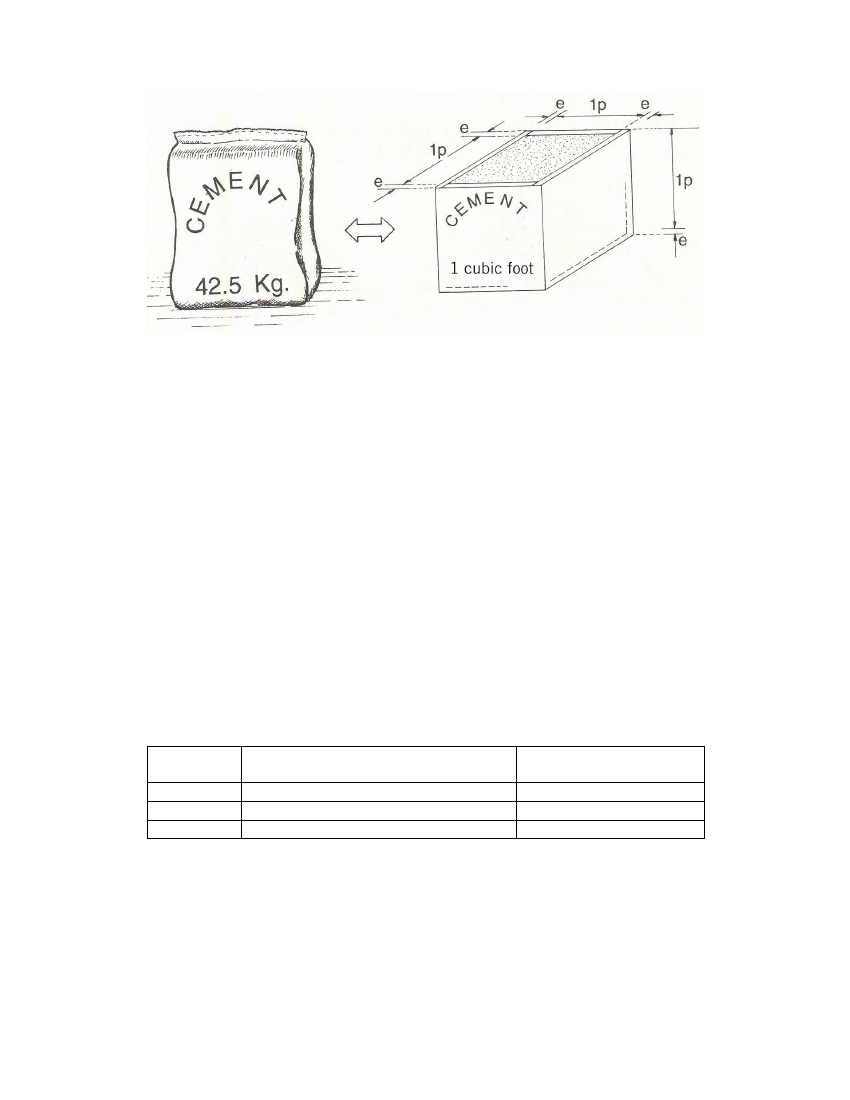
1 cubic foot = inside measurement
e = thickness of the wood
Fig. 22
In this country [Peru], cement is sold in 42.5 kg bags, a volume equivalent of 1
cubic foot.
The proportions by volume are expressed as a single unit for all aggregates
except water.
The data shown in the following table were carefully calculated from dosage by
weight. Nevertheless, it is worth pointing out that good concrete does not only
depend on the required proportions but on other parameters as well, as is
explained below.
Proportions vary according to resilience and compression (f'c). Resilience will
depend on the type of work undertaken. Typical concrete values are 140, 175,
or 210 kg/cm2 of f'c; some projects may require more resilient concrete.
Table 1
F’c Proportion of cement and aggregates
concrete : sand : stones
140 1 : 2 : 4
175 1 : 2 : 3
210 1 : 2 : 2
Water
(litres/bag)
28
25
22
This means that in order to obtain 140 kg/cm2 of concrete, the mixture must
consist of:
1 bag of cement, 2 bags of sand and 4 bags of split stones (if a bag is used as a
measuring unit), plus 28 litres of water.
23